Modern Egypt Compared to Ancient Egypt
2022/03/29
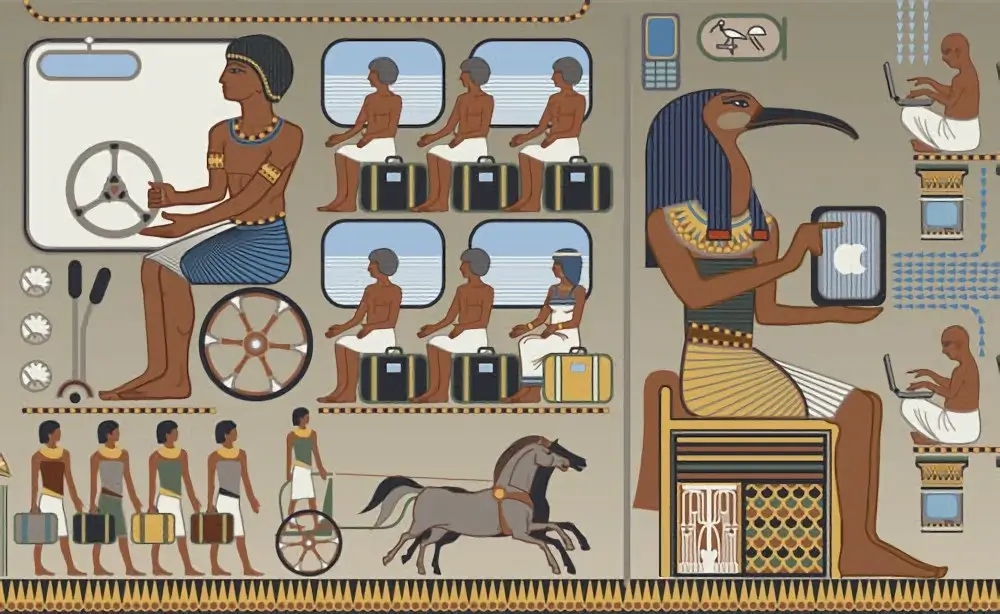
2022/03/29

It’s been more than 7,000 years and 7+ invasions. Many wonder how much has Egypt changed after 30+ centuries, whether it is a cultural, linguistic, or genetic change.
2,700 years ago, Egyptian priests started dressing like this. People often think that when Arabs invaded Egypt, Egyptians were affected by the culture of the Arabs; but it’s the other way around (e.g., “footah”, an Egyptian word ─ that some Arabian countries have borrowed).
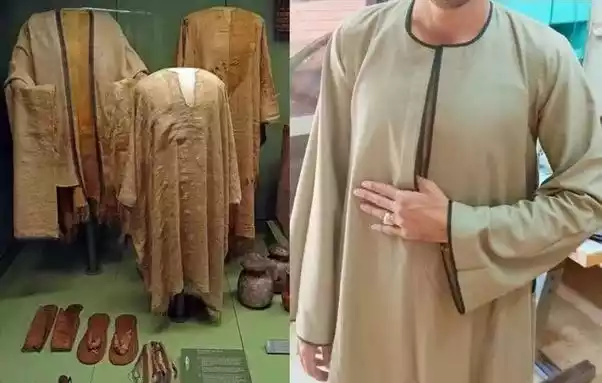
Most, if not all Egyptians have this─but about 50%+ wear it often, sometimes with the white Turban as well. The origins of the Turban are Eastern ─ but unknown, some experts say it originated in Egypt and some say in Persia (Iran).
The Arabian thobe we see today was invented in the 19th century, it’s a misconception that Arabs wore it in the past and it’s a bit different than the Egyptian one. It was most likely inspired by the Egyptians.

Some Egyptian villages were still speaking the Egyptian language until the 18th century; because Arabic started becoming the language of Business. Though, Bohairic Egyptian in Coptic script is still used in churches. The current Egyptian Arabic dialect has many Egyptian words and grammar.
Outside the walls of the church, modern-day Egyptian farmers of all faiths are still using the ancient Egyptian calendar as a basis for regulating the cycle of seeding and harvesting crops.
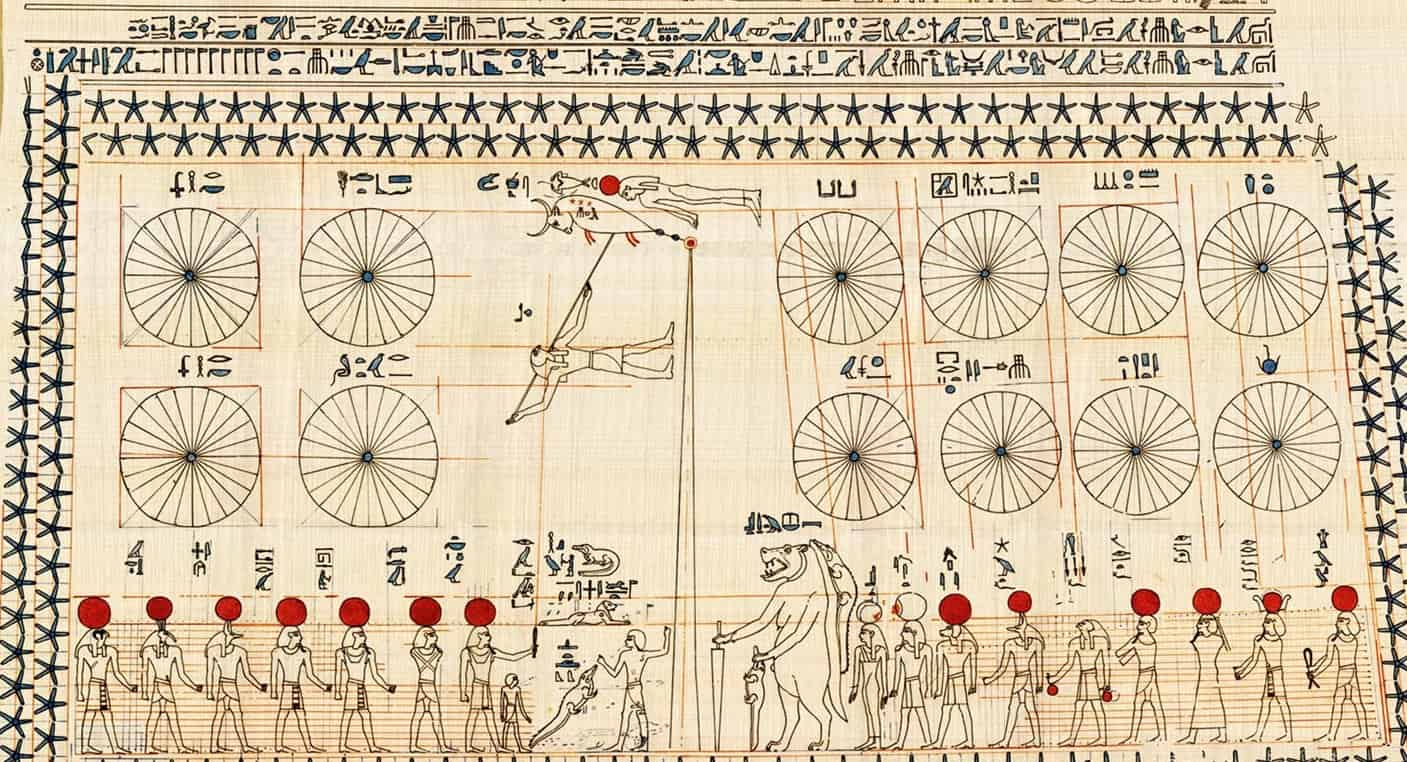
In some occasions, such as pre-weddings or birthdays, modern-day Egyptians use Henna for temporary tattoos, typically on their hands or feet. Which is something their ancestors have been doing for 9,000 years.
An Egyptian festival during the beginning of spring, where Egyptians go on picnics, eat fisikh (a traditional celebratory ancient Egyptian dish). Egyptians have been celebrating this for more than 4,700 years and up to this day.
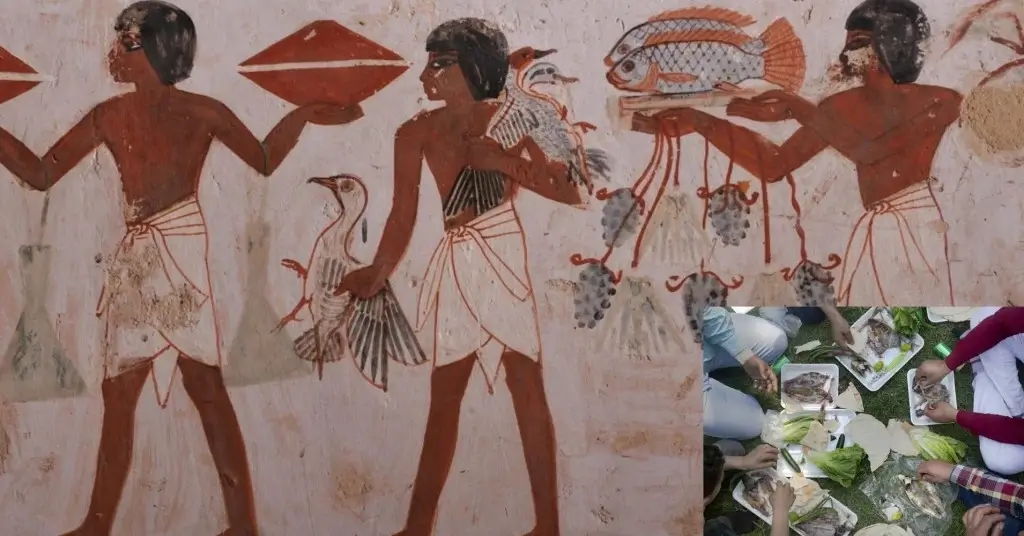
While the celebration is Islamic (only in Egypt), it has an interesting story behind it. Abu Haggag is a mosque in Luxor, Egypt. It is integrated into the structure of Luxor Temple, making it one of the oldest continuously used temples in the world. Opet has been celebrated for more than 2,000 years and up to the present day.
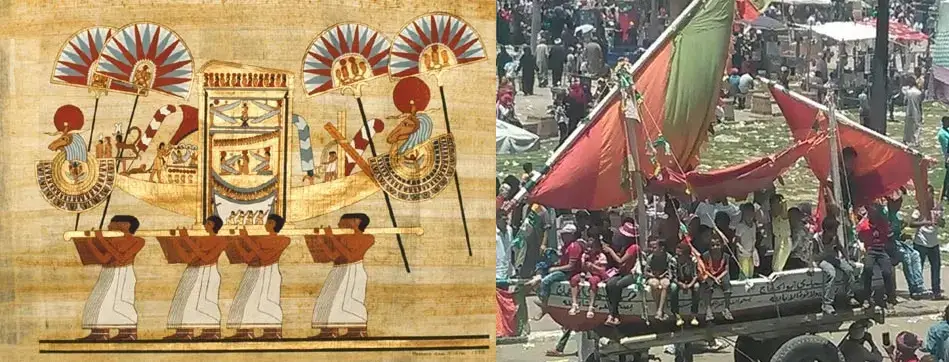
The Sebou’ is an Egyptian birth ritual whose murals from the New Kingdom era depict similar patterns of celebration. It takes place on the 7th day after the birth of a child. It is still celebrated by Egyptian families of both faiths.
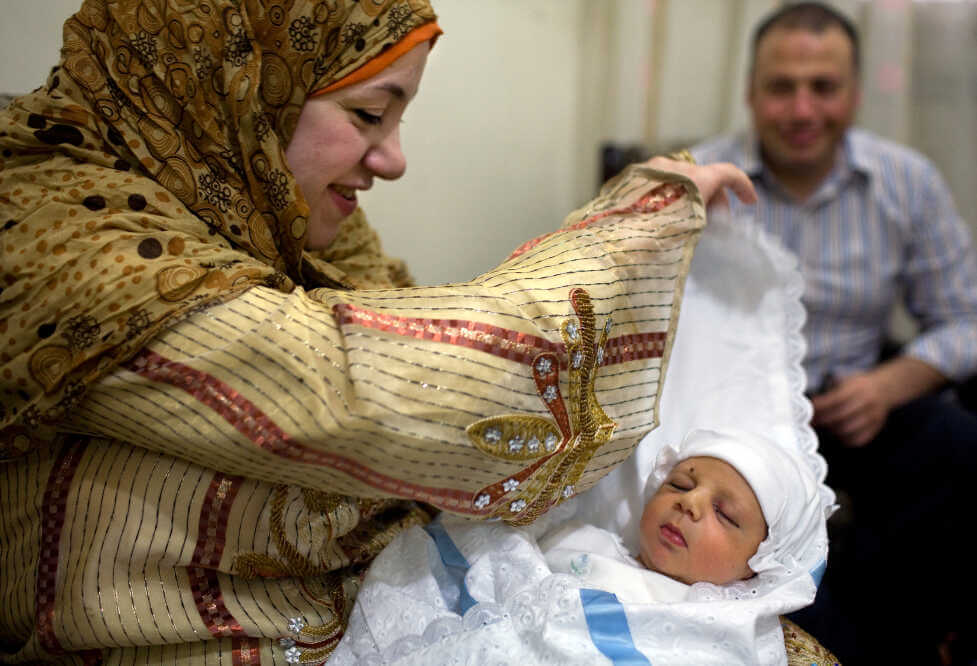
In ancient Egypt, Egyptians, usually farmers, offered something called “wheat bride/harvest bride” in harvesting season to Renenutet, the goddess of fertility and harvest. Today, this is something passed through generations that some people in upper Egypt know of.
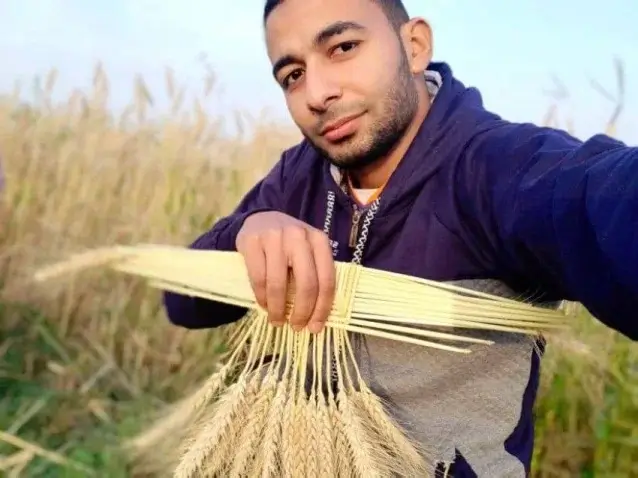
El-Shamsi (“sun bread”) is an ancient Egyptian bread that is still baked today in Egypt. It is an inheritance from pharaonic times when ancient Egyptians were among the first to produce bread. Moreover, modern Egyptian breakfast and side dishes are almost the same as they used to be thousands of years ago.
A couple of other ancient Egyptian dishes that are still widely eaten in modern-day Egypt are: Falafel, Molokheya, Ful Medames, Hummus, Koshari, Fattah, Fisikh and more.
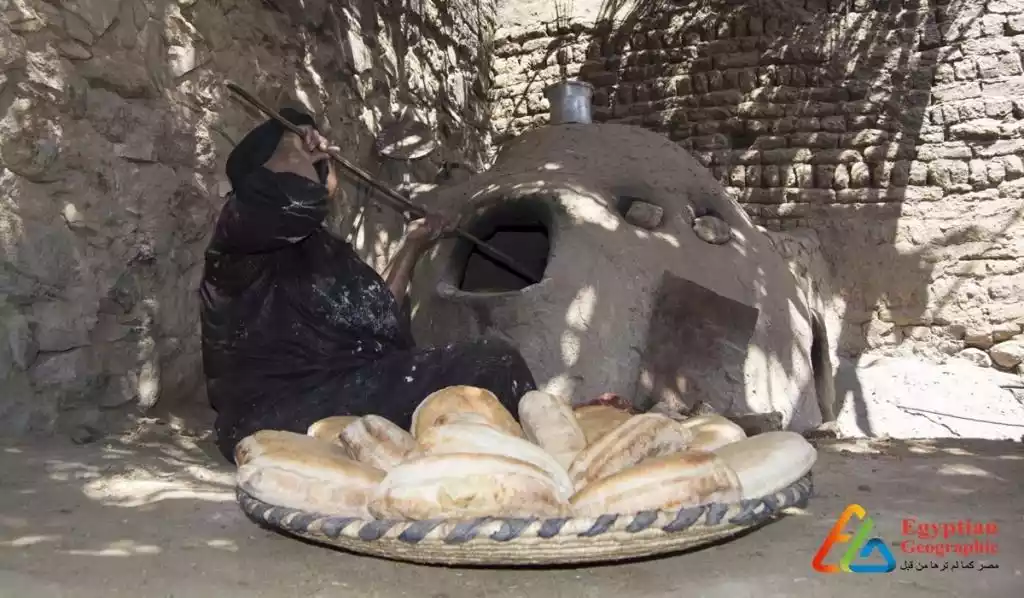
Currently, Egyptians have entire cemetries/towns of little houses (tombs), where they bury the dead. Such as the “City Of The Dead” in Cairo and Minya. Nobody lives in those ‘houses’ as they are just for the corpse. Ancient Egyptians buried the dead in tombs for resurrection. It is said that some of these ‘graves’ are thousands of years old.
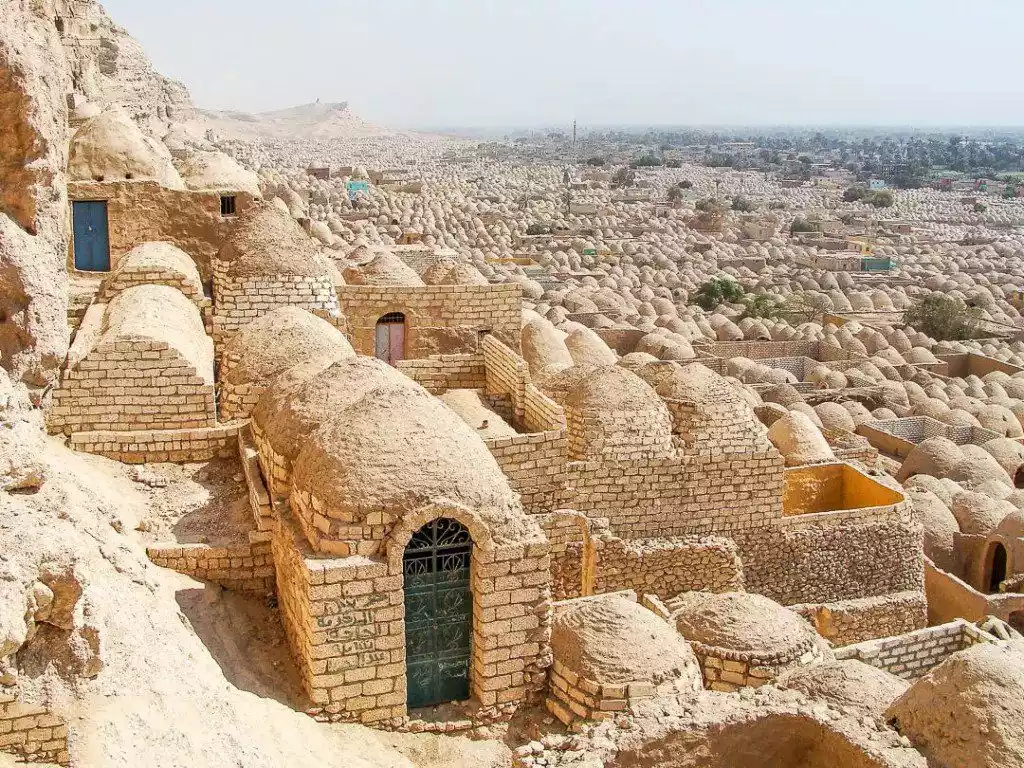
Dances such as belly dancing originated in Egypt with unique moves adopted later by other countries. Usually, Baladi music is played while the dancer is performing.
Baladi music is played using flutes and trumpets, which look exactly like Tutankhamun’s trumpet from almost 3,400 years ago. Some Egyptians still play the Simsimiyya instrument (a 4,000+ year old ancient Egyptian instrument).
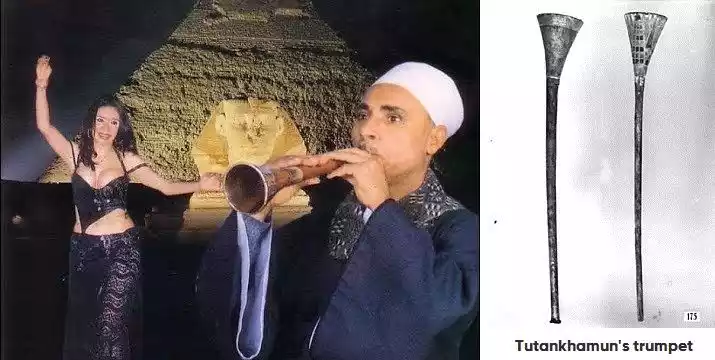
A 4,500+ year old stick-fighting martial art in Egypt, by the mid-1900s ─ it evolved into an Egyptian folk dance with many of its basic moves still used. Still practiced/performed today mostly in Upper Egypt.
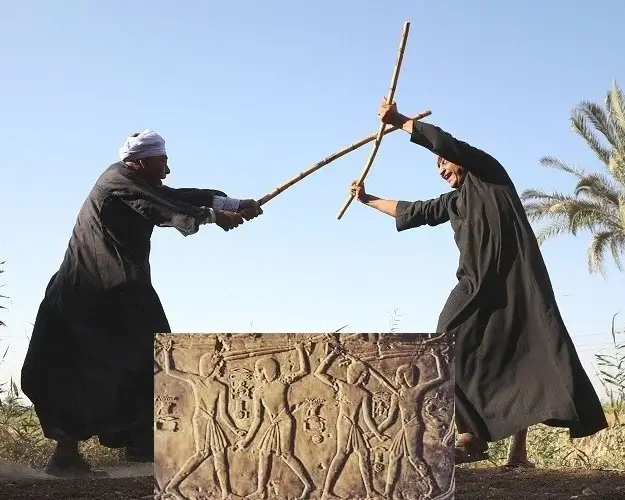
Many ancient Egyptian names are still used in modern-day Egypt, here are some examples I found after some research:
Egyptian: Ramses, Haroon (Hebrewized Aaron), Mariem (Hebrewized Miriam), Shenouda, Abanoub/Banoub, Bashandy, Bakhoum, Bekhit, Bahur, Ména (Menes)
Most likely Egyptian: Beshara, Sarofim, Nashaat, Kedwany, Hani, Moheb, Tharwat, Bassily, Simaika, Ghalioungui
Most likely Egyptianized: Kelada (Latin: Claudius), Sawiris (Latin: Severus) Fahmi (Arabic), Sidhom (Arabic), Nagy (Hebrew), Sobhi (Arabic), Gorgi (Macedonian)
Additionally, there are plenty of Egyptian cities, governorates, and towns that still have the same names that they had thousands of years ago.
When you think of India or China ─ they’re very ancient people but still the same as they are today (genetically). Jews have been ethnically cleansed dozens of times and the Israelite DNA still exists. Native Americans have been massacred and mixed with and still exist. There has never been any ethnic cleansing in Egypt.
Egypt has always been one of the densest countries in the world living along the Nile river, how would someone go about massacring their native population, and for what purpose?
Egyptians being mixed with is also a misconception considering those who entered were soldiers, not migrants. The “migrants” who entered were tiny minorities of Arab Bedouin tribes (less than 1% of the population), who live in the Sinai desert and have not mixed with Egyptians living along the Nile. Egyptians are not tribal.
There have been several genetic studies on mummies and modern Egyptians, but some could be misleading since some Pharaohs had foreign wives, so the mummies being examined could have foreign DNA and also some forms of representation of DNA results such as Haplogroups can be inaccurate and misleading in some cases.
However, one of the most popular, decade-old study by National Geographic shared its results: NGGP: 40% E-V22, 5% E-M81, 5% E-V65, 20% J1, 10% J2, 10% G, 10% R1b-V88 (Northern Egyptians) ─ 80% E-V12, 10% T1, 10% J1 (Southern Egyptians); show an overwhelming genetic continuity from the New Kingdom period (1500 BCE), and a distinct North African cluster.
Two other studies proved that the blood typing of Dynastic period mummies found their ABO frequencies to be most similar to that of modern Egyptians.
There has been an mtDNA study (less accurate than Y-DNA) that claimed that ancient Egyptians are closer to near-east people (levanines) than modern Egyptians. However, this is because of the possible increase in Sub-Saharan lineages (8% increase) in modern Egyptians; it does not invalidate the continuity between ancient and modern Egyptians.
The only reason for someone in the Levant (usually Lebanon) to have some Egyptian DNA is because some Egyptian families during the times of Phoenicia settled in Byblos, Lebanon ─ and/or for prehistoric migration reasons.
Moreover, Christian Egyptians aren’t more Egyptian than Muslim Egyptians. There have been several studies which have shown that Christian & Muslim Egyptians originate from the same ancestors.
After all of this, it seems that Egyptians now are pretty much genetically the same and still have their culture and some linguistic elements.
Something that Afrocentrists seem to ignore is that the Nubians were once slaves of the Egyptians at a time (not racially motivated ─ as Libyans and Asians were also enslaved). There was also a battle led by Ramesses II where the Cushites were crushed.
Additionally, I want to clarify a common misconception about the word “Copt”. Coptic is a writing system and a family of closely related dialects from the ancient Egyptian language. It is not a religion, it is also not really an ethnicity. The term is a bit outdated and misused.
Egyptians are diverse when it comes to skin color. You will notice in ancient Egyptian art, that women usually have a lighter skin than men; this is because women of the pharaohs usually relaxed inside more often, so the men were more prone to getting tanned (e.g., Prince Rahotep).